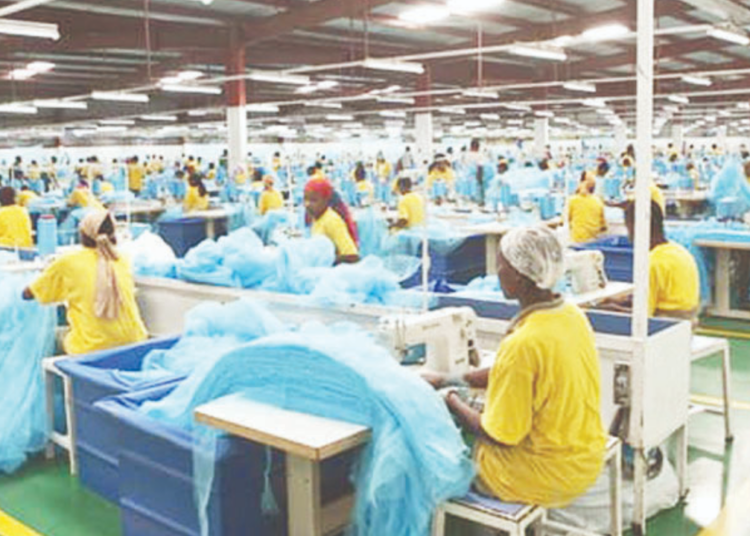Despite the federal government’s N100 billion funding of the nation’s textile industry, Nigeria is still missing in the ‘Best Fabrics Producing Countries’
Of the top 12 counties in Fabrics production who exported the most textile materials in 2021, Morroco is the only African country on that list, having exported garment materials worth $297million, as there is no place for Nigeria owing to challenges bedeviling the country’s textile industry.
The federal government, had, through Cotton Textile Garment Intervention Fund, invested N100 billion to revive the Nigerian textile industry but the intervention seems not to be working as shown in the research carried out by Grand View Market Research.
Globally, the research says textile sector was worth a whopping $993 billion in 2021 and grew to $1 trillion in 2022.
Looking at the global textile industry is one of the largest sectors in the world, it consists of a host of different products, ranging from clothes, garments, yarn, fabrics, cotton, and more.
From the current year until 2030, the research firm believes that the industry will grow at a compounded annual growth rate (CAGR) of four per cent to be worth an estimated $1.4 trillion by the end of the forecast period. In terms of composition by products, the cotton sector is the largest sub segment of the textile industry.
The research firm disclosed that cotton accounted for a strong 39 per cent of the total market revenue in 2021, with America, China, and India being the largest cotton producers in the world. Apart from cotton, wool was also a big part of the industry, as it accounted for 13 per cent of the market and was used primarily in winter products such as jackets and blankets.
Regionally, Asia Pacific has the largest textile sector as it accounted for close to 50 per cent of the total revenue. For North America, the U.S. is the largest textile country, as it produces significant amounts of cotton and textiles as well as imports large amounts of products.
Recall that in Nigeria, there were 175 textile mills in the country as at 1985 but the country can only boast of 20 textile industrial firms as at the end of 2022.
In terms of employment opportunities, the number of jobs provided by the industry took a dive from 137,000 jobs in 1996 to 24,000 jobs in 2008. Today the number of jobs provided in the industry is less than 20,000.
Stakeholders had advised the government to provide the enabling environment for revival of the textile industry and the manufacturing sector.
President of Nigerian Textile Manufacturers Association (NTMA), Mr Folorunsho Daniyan, observed that, in spite of the efforts to revive the textile industry, the sector is still confronted with many challenges that included high-cost production that has rendered its products non-competitive; unrestrained smuggling and counterfeiting of Made-in-Nigeria textiles; poor patronage in spite of Federal Government of Nigeria’s Executive Order 003 of 2017, inadequate and costly electricity supply, poor infrastructure, high taxation, and interest rates, high cost of diesel and LPFO and the depreciating value of the naira.
He also noted that the state of the industry particularly in the North is made worst by the heightened insecurity that is pushing away customers of the few existing industries in the North and also discouraging new investment in the area.
“We wish to emphasise that the government must do more to provide the enabling environment for the revival of the textile industry in Nigeria and manufacturing activities in general,” he said.
The managing director of Lancelot Ventures Limited, Mr Adebayo Adeleke, said that the N100 billion FG intervention failed because the issues on raw materials and machineries were not considered before putting up the programme.
“To ensure the revival of the textile sector, a number of issues should have been put in place, such as ensuring the machineries are producing effectively and efficiently to world standards and are able to make the companies compete constructively,” he pointed out.











